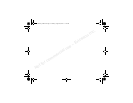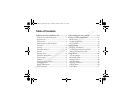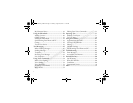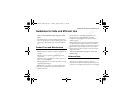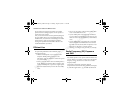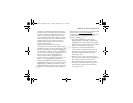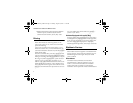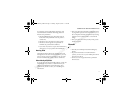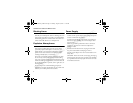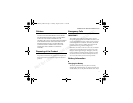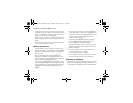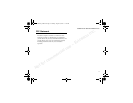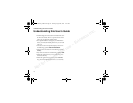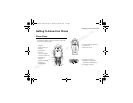
N
o
t
f
o
r
c
o
m
me
r
c
i
a
l
u
s
e
–
E
r
i
c
s
s
o
n
I
n
c
.
Guidelines for Safe and Efficient Use
2
Do not remove the antenna yourself. If your mobile
phone’s antenna is damaged, please take the product to
an Ericsson service partner.
Only use an antenna that has been specifically designed
for your mobile phone. Use of unauthorized antennas,
modifications, or attachments could damage the mobile
phone and may violate the appropriate regulations,
causing loss of performance and SAR levels above the
recommended limits (see below).
Efficient Use
For optimum performance with minimum power
consumption please:
• Hold the mobile phone as you would any other
telephone. While speaking directly into the
mouthpiece, angle the antenna in a direction up and
over your shoulder.
• Do not touch the antenna when the mobile phone is
in use. Touching the antenna affects call quality, may
cause the mobile phone to operate at a higher power
level than needed and may shorten talk and standby
times.
• Do not use the product when the front and/or back
cover is removed from the unit.
• If your mobile phone is equipped with an infrared
eye, never direct the infrared ray at anyone’s eye and
make sure that it does not disturb any other infrared
units.
• If your mobile phone is equipped with a retractable
antenna, Ericsson recommends that the antenna be
kept fully retracted (closed) while the phone is in use
and worn on the body to avoid the antenna
touching, or coming in close proximity to, the body.
Radio Frequency (RF) Exposure
and SAR
Your mobile phone is a low-power radio transmitter and
receiver. When it is turned on, it emits low levels of radio
frequency energy (also known as radio waves or radio
frequency fields).
Governments around the world have adopted
comprehensive international safety guidelines, developed
by scientific organizations*, e.g. ICNIRP (International
Ditto Nicole_NoBr.book Page 2 Tuesday, August 28, 2001 11:39 AM





